SHOT Show and IWA are now well behind us and while there were some cool new airsoft replicas that broke cover this year, am I the only who thinks that airsoft manufacturers mostly just keep churning out yet-another-variation-of-the-same-things? When the biggest news seems to be about a new line of tacticool AK’s or yet another licensed M4 clone, isn’t it time for something a little more interesting?
Well, we certainly think so – so here’s our list of the “Top 10 Must-Have Airsoft Guns That Don’t Exist – Yet” (judged on the basis of historical or technological significance – plus a bit of “cool factor”):
1. FG 42, Type 1 Paratroops Rifle
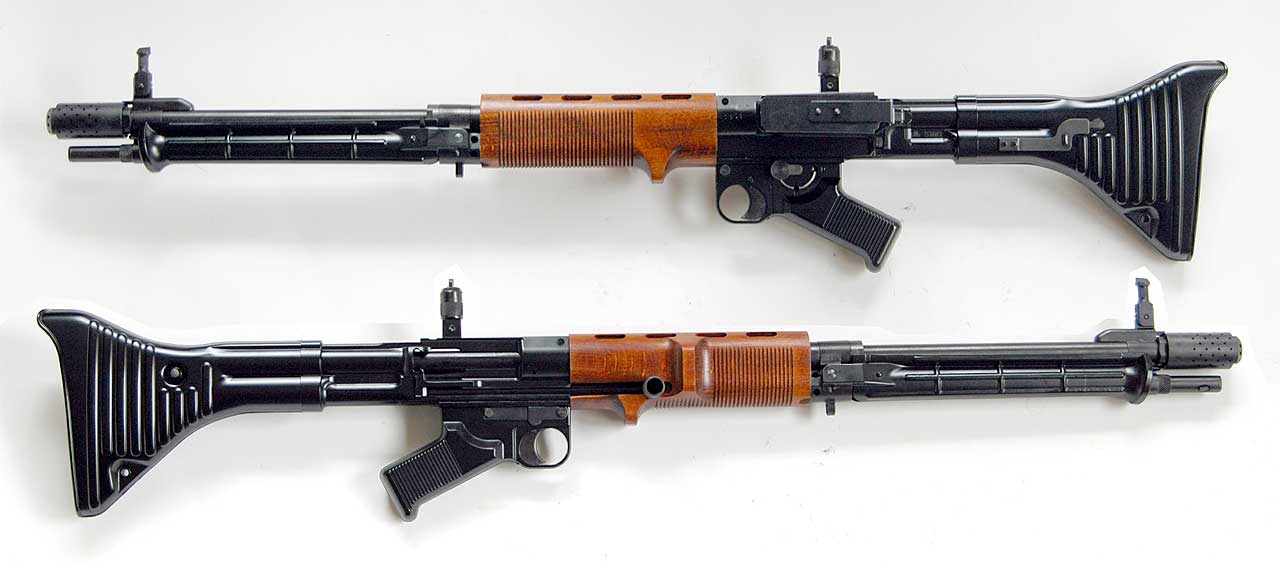
The WWII German Luftwaffe Fallschirmjaeger (parachute light infantry) were one of the most elite fighting units of the war by anyone’s standards, and they quickly learned – the hard way – that bolt-action rifles with a 5-round internal magazine don’t lay down much firepower. So the Luftwaffe high command went off and commissioned German industry to come up with something better. What they delivered was the truly revolutionary Fallschirmjaeger-Gewehr 42, or FG 42 for short – the “42” designating the year 1942 for when the rifle was developed. To differentiate the rifle from a slightly modified/improved version that came along shortly after, the first production model became retroactively known as the Type 1 – at least outside of Germany. The Type 1 is THE classic example of the FG 42 however, and with its semi-bullpup design, side-mounted 20-round magazine, sharply angled pistol grip, stamped-metal buttstock, and integral bipod, it is also one of the most distinctive-looking small arms in history.
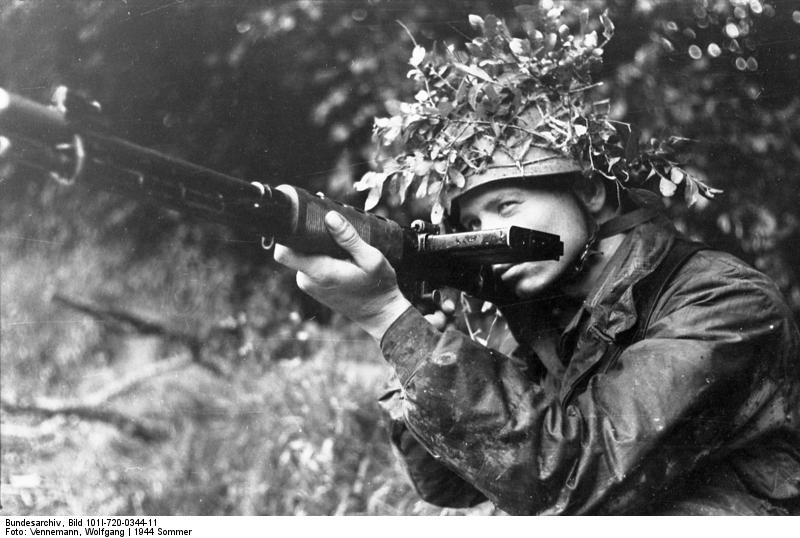
The FG 42, with its full-power cartridge, was in many ways just as influential on post-war small arms design as the later StG 44, with its reduced-power cartridge, was. Certainly full-power, selective fire, battle rifles, with detachable 20-round magazines (and their AR/LSW variants with bipods and extended mags) – such as the FN FAL, M14, G3 and AR10 were influenced the FG 42. And other weapons, such as the US experimental T-44 and later the M-60 machine gun even incorporated design features copied from the FG 42. However, in the hobby world, Shoei corporation in Japan makes very nice non-firing FG 42 replicas, but sadly no significant airsoft manufacturer makes an EAG or GBB version of the FG 42. This needs to change ASAP!
2. HK11 LMG
The HK11 was developed in the 1960s as a heavy-barreled version of the G3, and intended for use as a magazine-fed, squad-level light support weapon. It was introduced alongside the HK21 light machine gun that could fire from either a belt or a magazine. The HK11 series could feed from standard 20-round G3 magazines, extended 30-round magazines, a 50-round single-drum magazine or an 80-round double-drum magazine.
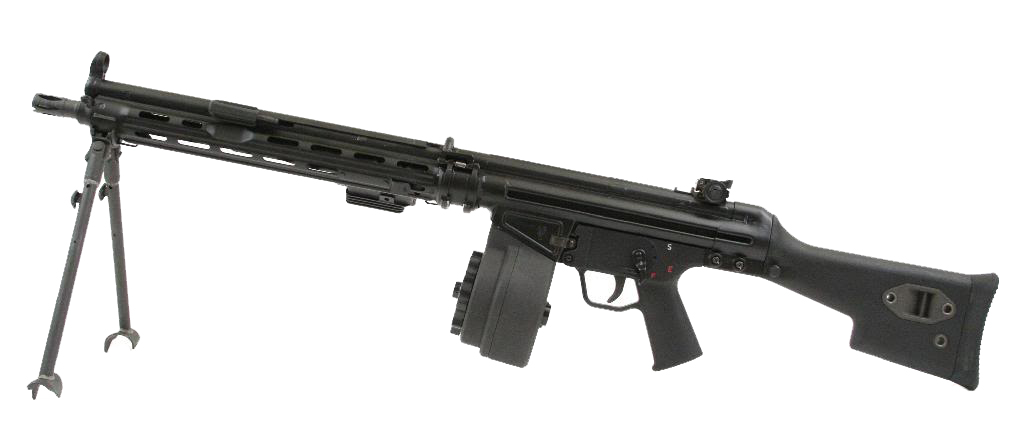
Although the belt-fed / mag-fed HK21 appears to have seen more widespread use than the HK11, the G8 configuration of the HK11 (fitted with a telescopic sight and 50-round drum magazine) has been used extensively by German military and police Special Operations Forces.

It would also be the simplest and easiest variant to reproduce in airsoft form; requiring only a different buttstock, outer barrel, barrel shroud/hand-guard, carrying handle, and bipod. The G3 is seeing a resurgence currently among manufacturers and airsofters, so developing an HK11 modification kit would certainly seem to make sense. Let’s hope someone does it!
3. HK433 Assault Rifle
If you’ve been keeping up on current small arms developments, then this one probably doesn’t require much of an introduction. Sometimes called “The German Masada” the Heckler & Koch HK433 is a assault rifle chambered for 5.56×45mm that combines features of the G36 and the HK416 rifles. The HK433 was launched at EnforceTac 2017, but a select number of people also got a sneak-peak at the SHOT Show in January of that year.
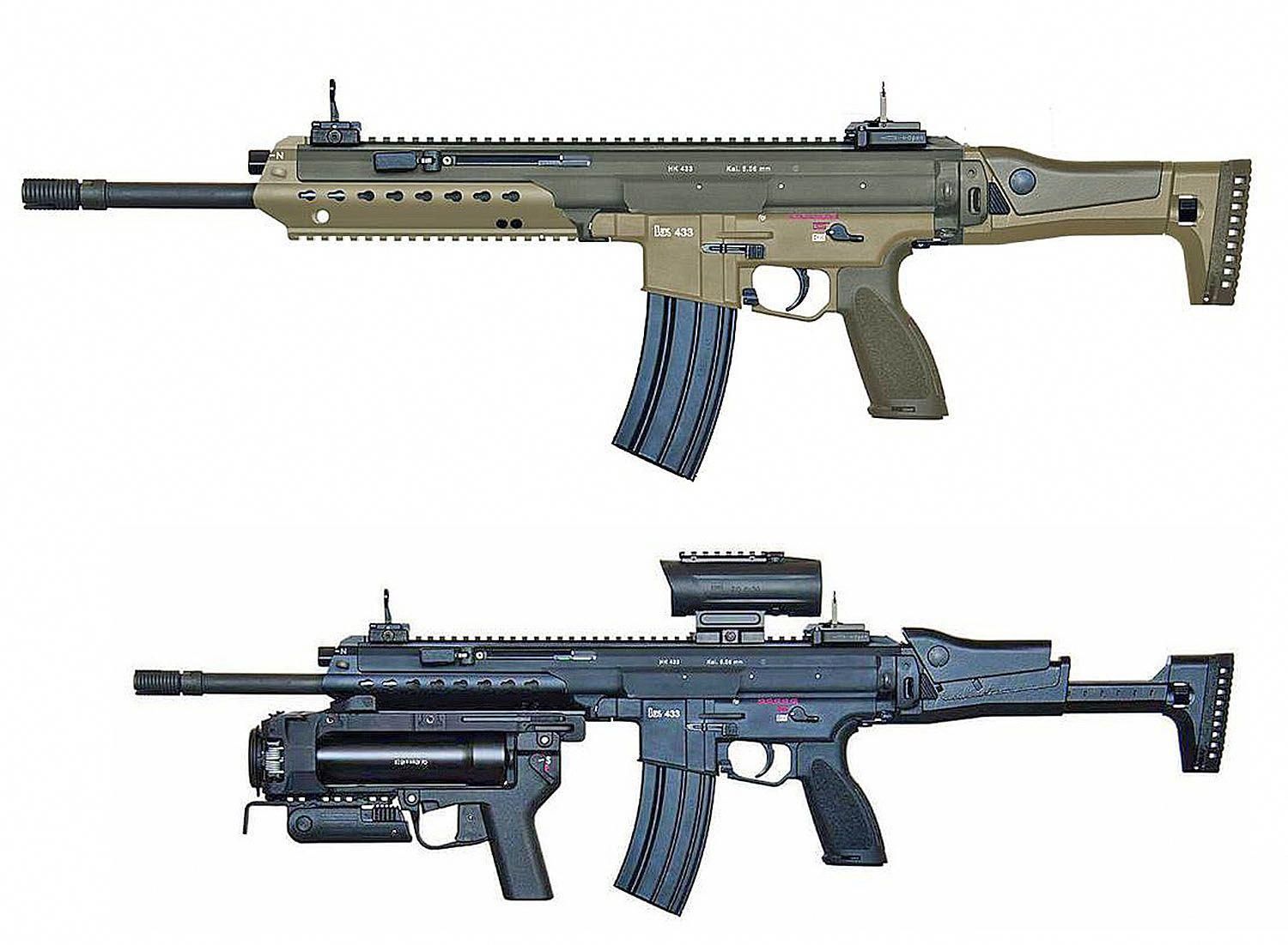
H&K is pitching the rifle as a candidate for the German Bundeswehr’s competition to select a new assault rifle in 2020, as well as offering it for export sales as well. Like the ‘Masada’, the 433 has a quick-change barrel feature and is rumored / planned to be offered in several popular calibers as well. Considering that the HK433 is a very significant development by one of the world’s leading small arms manufacturers, it is somewhat surprising that no airsoft manufacturer has developed a replica of it. Perhaps that will soon change…
4. HK MG4 LMG
The Heckler & Koch MG4 is a belt-fed 5.56 mm light machine gun developed in the late 1990s and first seen publicly in September 2001. It has been selected to replace the 7.62 mm MG3 general-purpose machine gun in the Bundeswehr at the squad support level and will complement the MG3 in other roles.

The MG4 is an air-cooled, belt-fed, gas-operated, light machine gun with a positively locked rotary bolt and is somewhat similar in concept, and appearance, to the Belgian Minimi light machine gun – but is belt-fed only. Overall, it is designed to be light, function reliably under adverse conditions using a wide range of ammunition from different manufacturers without the need to adjust the gas system, has a hammer-forged quick-change barrel that can be safely swapped out without the need for protective gloves, and also remains fully operable with the buttstock folded. The MG4 has currently been adopted by the German Bundeswehr, the Spanish Army, the Albanian Land Forces, the Estonian Special Operations Forces, the Malaysian Navy Special Operations Forces, the Portuguese Army, and the Turkish Air Force Special Operations Forces – but so far no airsoft version exists. Sadness…
5. Stoner 63A Carbine / ‘Bren’-LMG
The Stoner 63 is the Grand Daddy of all modern Modular Weapon Systems, using a variety of modular components it could be configured as a rifle, a carbine, a top-fed light machine gun, a belt-fed squad automatic weapon, or a vehicle mounted weapon. It was designed between 1960-1962 by Eugene Stoner – who had previously been responsible for the design of the ArmaLite AR-15/M16 assault rifles, AR-10 battle rifle and AR-7 survival rifle. After he left ArmaLite, Stoner went to work on this concept for a modular weapon that could be transfigured by simply fitting the appropriate parts to a basic common receiver assembly.
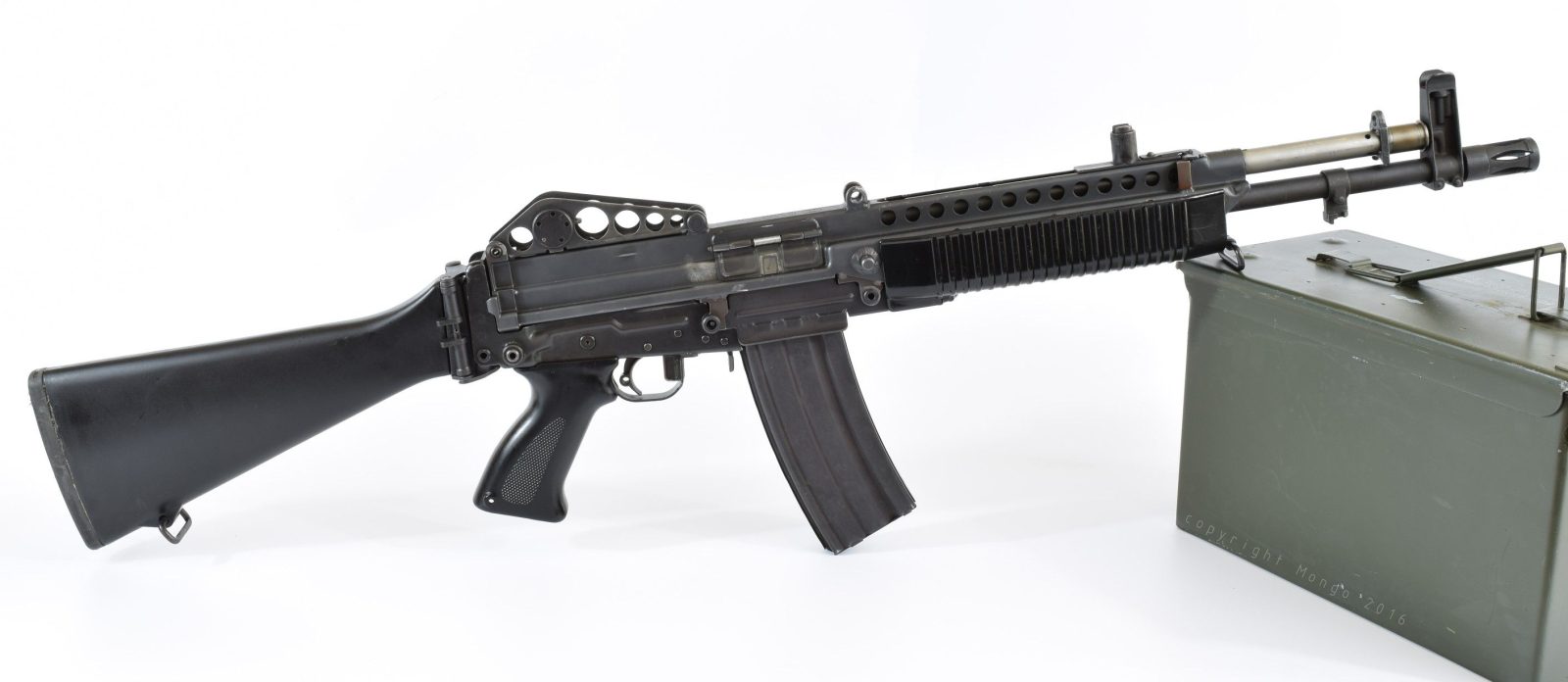
The Stoner 63 system was the result of his efforts and was tested in various configurations by the US Army and US Marine Corps in 1963. After several months of testing, the Stoner 63 system was ultimately deemed to be unacceptable for service use and the Army submitted several recommendations for improvements to the design – which led to the Stoner 63A version. The Stoner 63 / 63A saw limited combat use during the Vietnam War, most famously with the US Navy SEALs and a few were also sold to law enforcement agencies. At the beginning of the 1970’s the Stoner 63A system was licensed to the Dutch company NWM De Kruithoorn N.V. and a further improved version was offered (unsuccessfully) to the Dutch Armed Forces in six variants as the Stoner 63A1. The A1 version was also tested by the US Army and USMC as the XM22 assault rifle, XM23 carbine and XM207 machine gun, but by this time the M16 was well established within the US military and there was no compelling reason to switch to the more complex, and expensive, Stoner 63A1 system.
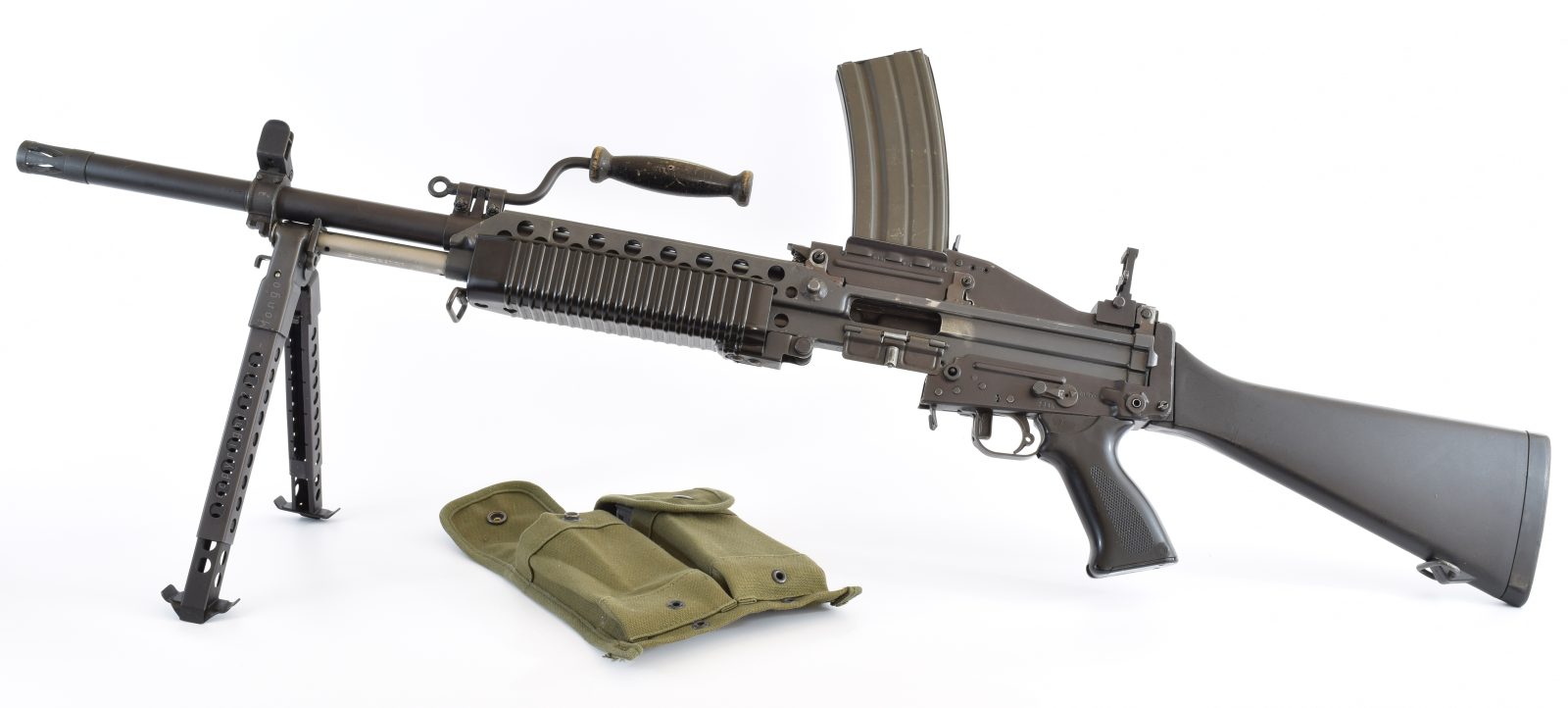
Fast forward 50+ years and modularity has become widely implemented – albeit not to the degree that was achieved with the Stoner 63 series. Meanwhile in the airsoft world, G&P have produced the US Navy SEAL Mk63 SAW version that was used in Vietnam, so surely they could follow the path of modularity and also bring us the Carbine and Bren-style LMG versions?
6. Stoner-KAC Assault Machine Gun
Originally developed by Eugene Stoner and produced by Knight’s Armament Company, the Stoner LMG pays homage to the legendary Stoner 63 LMG – but in a lighter, leaner and improved version. KAC put several additional years of R&D into Stoner’s design and created the KAC Stoner 96 LMG. After extensive testing and field use during the Global War on Terror, Knight’s Armament Company have put further development into the weapon, now known simply as the Stoner-KAC Assault Machine Gun.
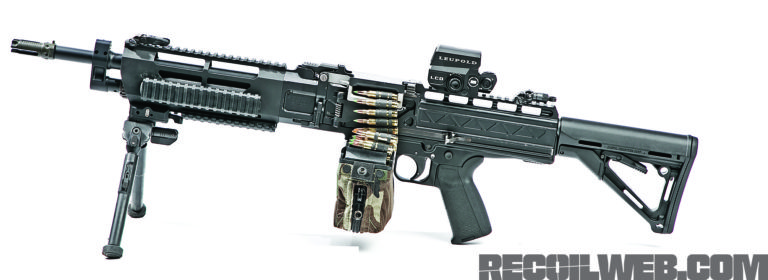
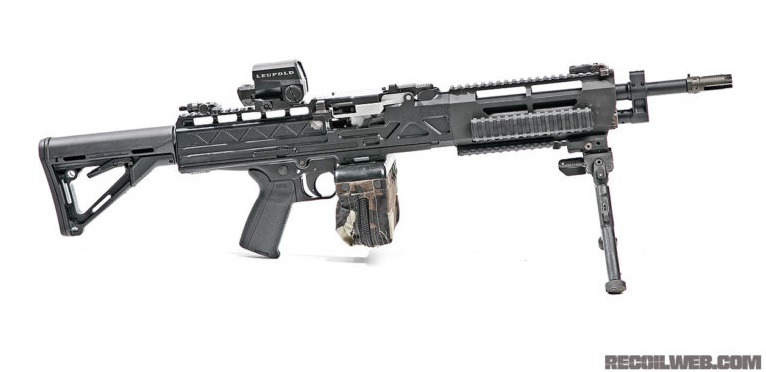
As the name implies, the Stoner-KAC AMG is not designed for sustained fire in a defensive role (although it does have a quick-change barrel feature), it is designed to do what a light machine gun should do – provide dependable, flexible, easy-to-use, concentrated firepower in support of an infantry squad or commando unit conducting an assault or fire-and-maneuver tactics. For my money, as an old airborne infantry guy, a gun like this makes perfect sense – and is far more effective than an “automatic rifle” like the M27, and much less cumbersome, complex, and pretentious than the M249 SAW that I used to carry. By the way, check out the in-depth look at the real-steel over on RECOILWEB.
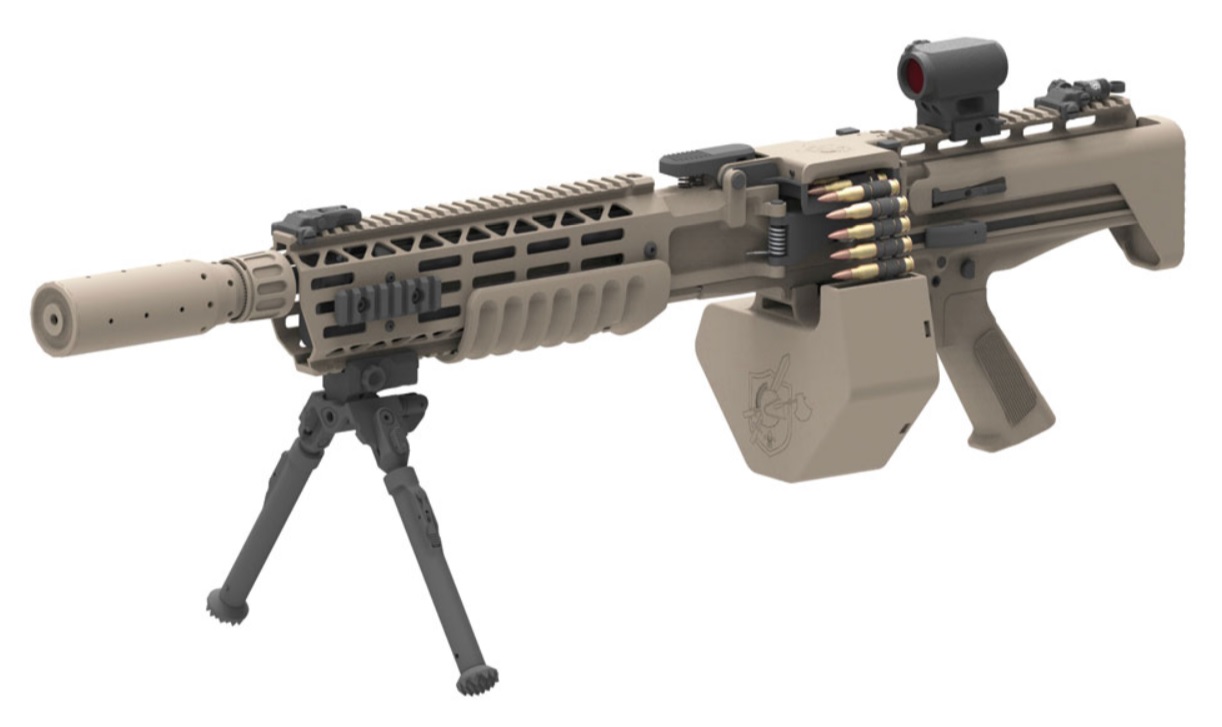
The latest version Stoner-KAC AMG has not been on the market for very long now, but with any luck Knight’s Armament Company will secure a contract soon. In the meantime, how about a licensed airsoft version guys? After all, they did license an airsoft version of the earlier version of the weapon, the Stoner-KAC 96 LMG, but this newer version is so much nicer….
7. WAT-FB MSBS-5.56 ‘Grot’
Now we turn our attention to a rifle that has been called “The Polish Masada”. The WAT-FB MSBS-5.56 (Polish: Modułowy System Broni Strzeleckiej kalibru 5,56 mm, English: Modular Firearm System 5.56 mm calibre), now known as ‘Grot’. It is a modular assault rifle developed and manufactured by FB “Łucznik” Radom as the next service rifle of the Polish Armed Forces, and the name means arrowhead in Polish. ‘Grot’ was General Stefan Rowecki’s pseudonym while he was the leader of the Polish Home Army (resistance forces) during WWII.
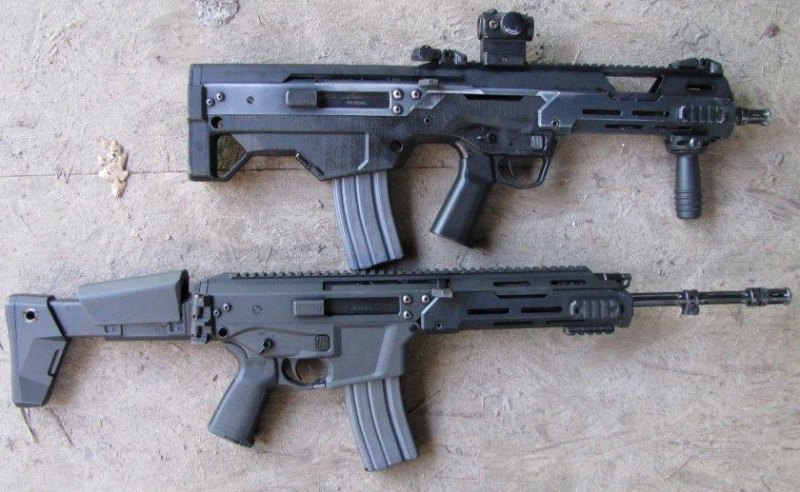
There are two basic variants based on a common upper receiver: one with a conventional layout, and one with a bullpup layout. With its variety of modules, both variants can be easily transformed into an assault rifle, carbine, designated marksman rifle or squad automatic weapon. The MSBS-7.62N is a battle rifle variant of the MSBS chambered for the full-power 7.62×51mm NATO rifle round and intended to function as a designated marksman / sniper support rifle for parachute infantry units.
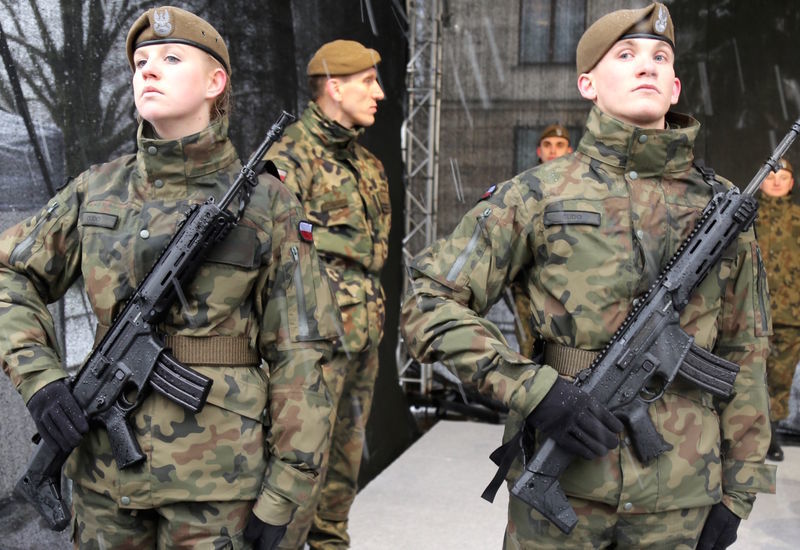
At the present time the 5.56x45mm NATO versions of the Grot assault rifle are entering service with Polish Army, Border Guard, and Territorial Defence Force units. Altogether, an initial order of 53,000 rifles has been placed by the Polish MoD and the Grot is also being considered by the Swedish and Pakistani Armies. The Grot was also under consideration by France and Estonia but lost to the HK416 in the French bid, and is not among the final short-list of AR-style candidates for the Estonian contract to replace their aging Galils and G3s. The Grot also does not yet exist in any version as an airsoft rifle either, and that’s a damn shame!
8. HK G11
So we changed this entry after it was pointed out to us by a couple of reviewers that a “Top 10” Wish List HAS to include the Kraut Space-Gun – so, even though we have a few other HK weapons in the list already…
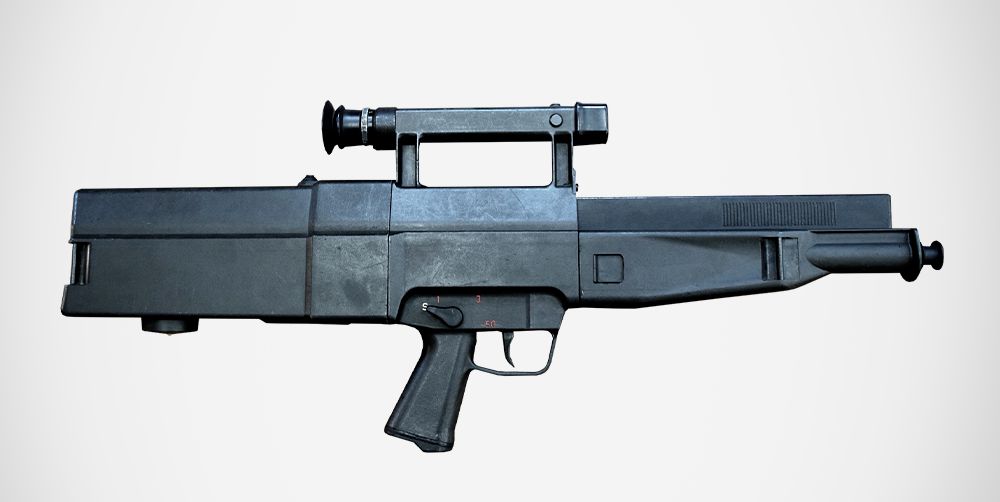
Like its cousin the XM-8, the Heckler & Koch G11 is perhaps just as famous for having not been adopted as it is for its radical design. Developed over the course of 20+ years, the G11 was a joint effort between Heckler & Koch (mechanical engineering and weapon design), Dynamit Nobel (propellant composition and projectile design), and Hensoldt Wetzlar (target identification and optic systems). The rifle was built around a unique and new form of small calibre, caseless, ammunition, fed from a 50-round straight stick magazine mounted parallel to the barrel, with the firing mechanism and chamber located behind the pistol grip.
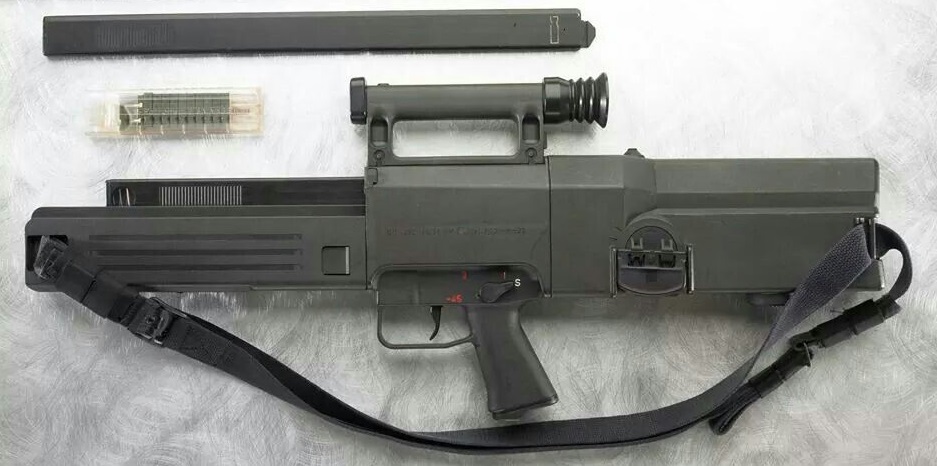
Virtually everything about the G11 was radically different from any rifle that had ever been developed before and was a very bold move by Heckler & Koch. It is a great testament to the designers and decision makers that the rifle was not only successfully developed into a production-ready weapon, but was also on track to be officially adopted by the Bundeswehr! In April 1990 the G11 was certified for adoption and the West German defence budget for 1989 and 1990 each included 30M Deutschmarks for the procurement of G11s.
However, production and procurement never actually went ahead because the Cold War political situation in Central and Eastern Europe suddenly and dramatically changed virtually overnight. In November 1989 East Germany opened its border with West Germany for free movement of citizens between the two countries and eleven months later, on 3 October 1990, the two countries officially reunified as one Germany. Suddenly the Bundeswehr had far bigger and more challenging issues to resolve – such as what to do with the entire apparatus, materiel and personnel of the former East German armed forces. In addition to the unexpected sudden need to sort out reunification, the Treaty on Conventional Armed Forces in Europe (CFE) was signed in November 1990 which limited the amount of conventional military equipment in Europe and mandated the destruction of excess weaponry. All of these factors delayed the planned introduction of the G11 into German military service.

The viability of the G11 platform was further shaken when the American Advanced Combat Rifle (ACR) Program ended in April 1990, with a decision to not adopt any of the contenders (which had included the G11). The German government prolonged the agony at the beginning of 1992 with a decision to delay the procurement of the G11 for another year, but then finally killed it off for good in June of 1993 – citing incompatibility with NATO standardization goals as the final rationale for the G11 program’s demise.
Although the G11 never got adopted in the end, surely the it’s iconic, “space gun” looks and amazing technological innovations should qualify it to be honored in airsoft form as well?
9. Vektor CR-21
If you’ve seen the movie “District 9” then you might recognize this next rifle…
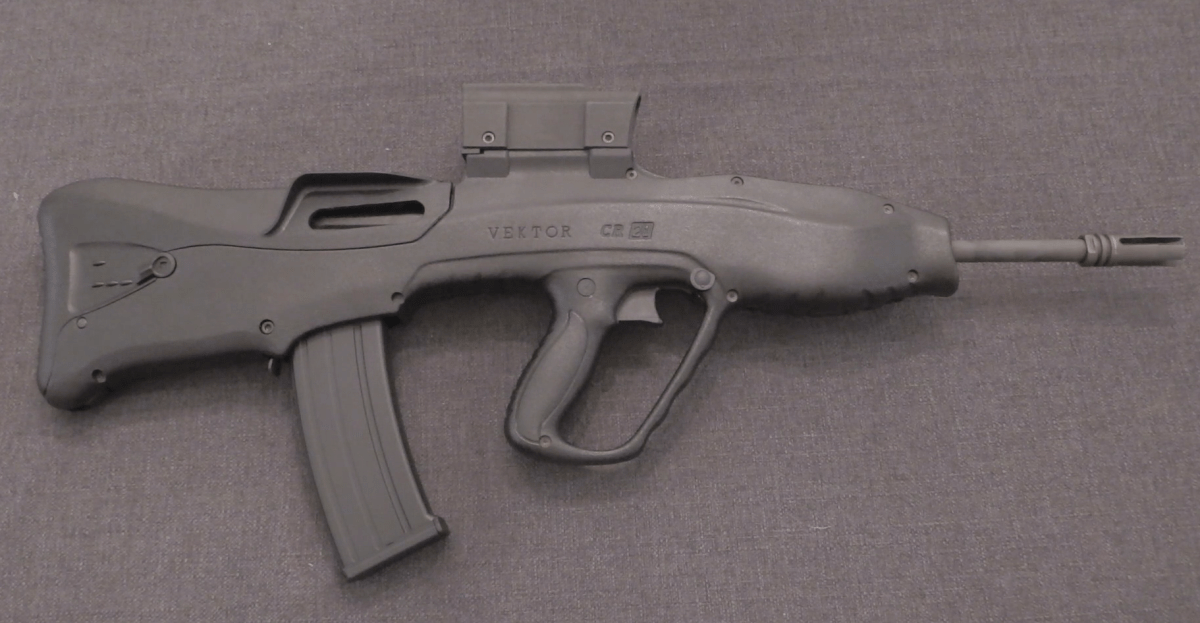
The Vektor CR-21 is a prototype South African assault rifle (“CR-21” being an abbreviation of Combat Rifle 21st Century) chambered for 5.56×45mm NATO ammunition. It was designed by Denel Land Systems as a possible replacement for the South African National Defence Force’s R4 assault rifle, however focus was shifted instead to offering an upgraded R4 instead. The CR-21 was also briefly offered for export sales but failed to get any orders. However, like its Finnish cousin the Valmet M82, the Vektor CR-21 did gain a certain amount of fame as a sci-fi movie gun – the Valmet M82 was featured in “The Terminator” and the Vektor CR-21 (painted white) starred in “District 9”.
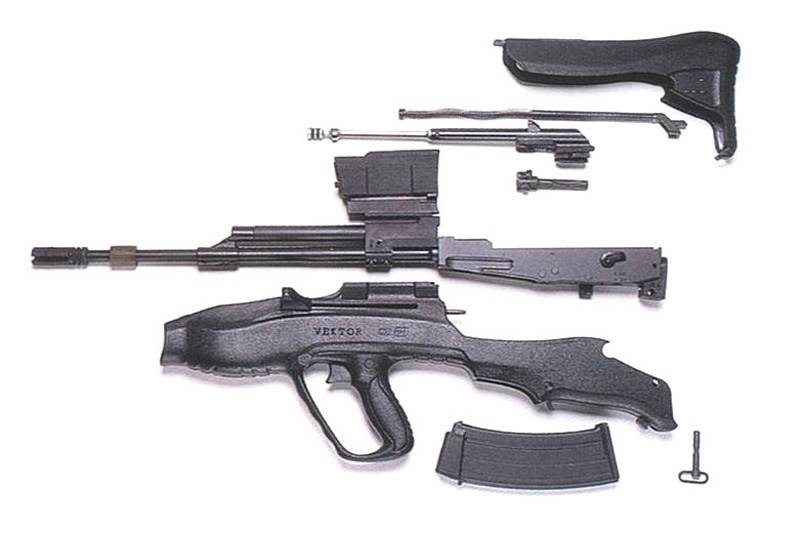
First unveiled in 1997, the CR-21 features a bullpup layout. While this enables the rifle to be as short as a carbine, but still have the muzzle velocity of full-length rifle, the CR-21 can only be fired from the right hand as the ejection port is located on the right side of the rifle and can not be changed to the left. Internally, the CR-21 is a slightly modified version of the the R4 assault rifle with the trigger moved forward of the magazine, the charging handle moved to the left front (similar to the Steyr AUG), and an optical sight is attached to a mount fitted in place of where the rear sight would be located on an AK. There are no iron sights fitted to the CR-21, and no provision for adding them as an accessory. The operating mechanisms, receiver and barrel of the rifle are encased in a high-impact resistant polymer body from front handguard to buttstock.
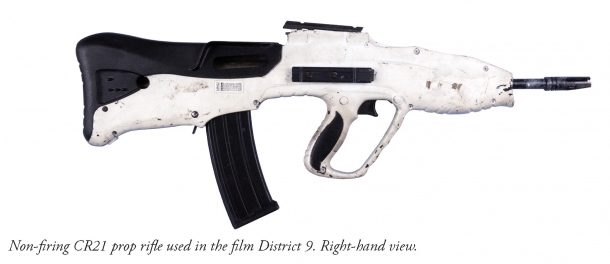
Beyond being featured in “District 9”, perhaps the CR-21’s greatest claim to fame is that it can be credited with influencing the designs of the more successful Singaporean SAR-21 bullpup rifle and Israeli Tavor. So will we see an airsoft version? It would be cool, but probably unlikely. At any rate, check the videos from Forgotten Weapons and Vickers Tactical if you want to know more about the real-steel version.
10. Simonova SKS-45
Although over-shadowed by its more famous cousin the AK, the SKS deserves a special place in the history of small arms. It is a semi-automatic carbine designed by Sergei Gavrilovich Simonov and produced in 1945. Its complete original prototype designation of SKS-45 stands for Samozaryadny Karabin sistemy Simonova, 1945 (Self-loading Carbine of (the) Simonov system, 1945). The SKS-45 was the second firearm to be chambered for the 7.62×39mm M43 round, with the first being the RPD-44 belt-fed light machine gun. In Soviet infantry doctrine of the time, the SKS was the standard squad-level individual rifle and the RPD was their squad-level light support weapon – the SVD-63 introduced later as their Squad Designated Marksman rifle.
* A special note about the Soviet small arms classification system; once a weapon design was finalized and put into service, the numerical suffix of the prototype is dropped – thus, the RPD-44, SKS-45, AK-47 and SVD-63 became simply RPD, SKS, AK and SVD.
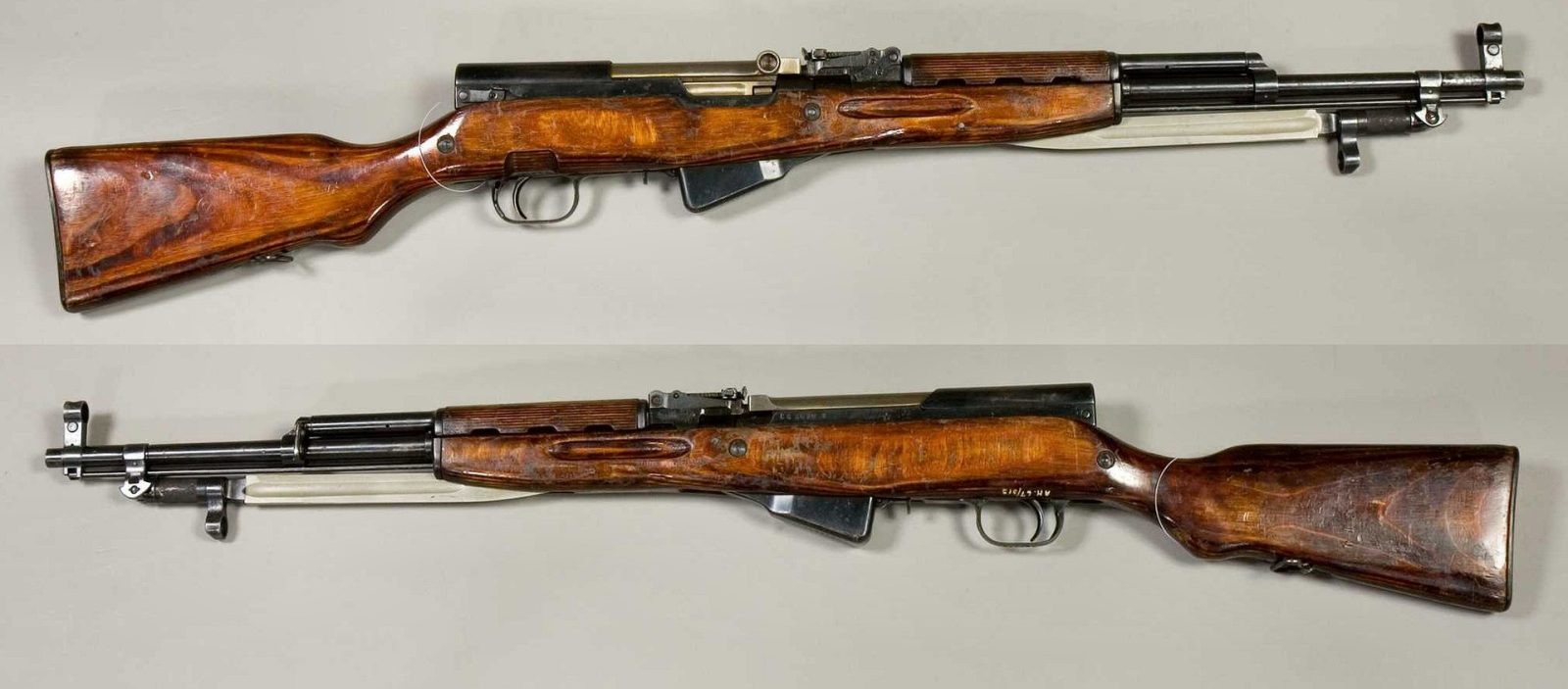
The SKS was widely exported and licensed for production by all Warsaw Pact nations, as well as Yugoslavia, China, Vietnam and North Korea. Although it is no longer in front line service with any major power, the SKS soldiers on as a second line and ceremonial rifle. The SKS also remains popular today on the civilian surplus market as a hunting and marksmanship semi-automatic rifle in many countries. But despite this long and illustrious history no one has yet produced a good quality airsoft replica of the SKS. An AEG or GBB SKS would certainly be a boon for Cold War and Vietnam War airsoft re-enactors, wouldn’t it?
So, that’s our list – what do you think? What’s missing – maybe the British EM-2 or perhaps the Lewis Gun?
